Bridging the Gap: Minnesota’s Science Standards and the Digital Divide
In an era where technology increasingly mediates access to education, the digital divide—the gap between those who have access to modern information and communication technology and those who do not—presents a significant challenge. This divide can severely limit students’ ability to engage with scientific education, a concern that Minnesota’s revised science standards aim to address head-on. By implementing strategies to bridge the digital divide, Minnesota is ensuring that its science education is both accessible and equitable, preparing students for a future in an increasingly digital world. This article explores how the state’s science standards are tackling this issue, fostering an environment where every student has the opportunity to succeed.
Understanding the Digital Divide in Education
The digital divide impacts students in several ways, from access to digital devices and high-speed internet to the ability to use technology effectively for learning. In science education https://www.canadavisa.com/canada-immigration-discussion-board/threads/ielts-essay-check-please-help-general.760592/#post-10382600, where digital tools and resources play a crucial role in understanding complex concepts and staying updated with the latest developments, this divide can hinder student engagement and achievement. Recognizing this, Minnesota’s approach to revising science standards includes measures to ensure that all students, regardless of their technological access at home, can participate fully in science learning.
Incorporating Digital Literacy into Science Standards
A key aspect of Minnesota’s strategy is the integration of digital literacy into the science curriculum. By teaching students not just to use technology but to understand and critically evaluate digital information, the state is equipping them with the skills needed to navigate the digital aspects of modern science. This emphasis on digital literacy ensures that students can access and utilize digital scientific resources, making science education more inclusive.
Leveraging Technology for Accessible Science Education
Minnesota’s revised science standards encourage the use of technology as a tool to make science education more accessible. This includes the adoption of online platforms that offer science content in various formats, such as videos, interactive simulations, and virtual labs, catering to different learning styles and needs. For students with limited access to physical science labs or resources, these digital tools can provide valuable hands-on learning experiences.
Reducing Barriers through Resource Allocation
To address the hardware aspect of the digital divide, Minnesota is focusing on equitable resource allocation. This involves ensuring that schools in underserved communities have access to digital devices and reliable internet connections. By prioritizing funding and support for technology infrastructure in these areas, the state aims to create a more level playing field where all students have the opportunity to engage with digital science education.
Training Teachers to Navigate the Digital Landscape
Recognizing that teachers play a crucial role in implementing the revised standards, Minnesota is investing in professional development focused on digital education strategies. Training programs are designed to help educators incorporate digital tools into their science teaching effectively, ensuring they can support students in navigating digital content and platforms. This teacher training is critical in bridging the digital divide, as it ensures that students receive guided, meaningful interactions with technology in their science learning.
Collaborating with Communities and Partners
Minnesota’s efforts to bridge the digital divide extend beyond the classroom, involving partnerships with communities, local governments, and private sector entities. These collaborations aim to expand broadband access, provide digital devices to students in need, and offer community-based digital literacy programs. By engaging a broad network of stakeholders, the state maximizes resources and expertise to tackle the digital divide comprehensively.
Monitoring and Evaluation for Continuous Improvement
To ensure that these initiatives effectively bridge the digital divide, Minnesota is committed to ongoing monitoring and evaluation. This includes collecting data on technology access and usage, student engagement, and academic achievement in science. Insights from this data will guide future revisions of the science standards and inform strategies to enhance digital equity in education.
Conclusion
Minnesota’s revised science standards represent a forward-thinking approach to addressing the digital divide in science education. By integrating digital literacy, enhancing access to technology, supporting educators, and fostering community partnerships, the state is taking significant steps to ensure that all students can benefit from a high-quality science education. As these initiatives unfold, Minnesota serves as a model for how states can navigate the challenges of the digital divide, paving the way for a future where every student has the tools and opportunities to explore the wonders of science.


